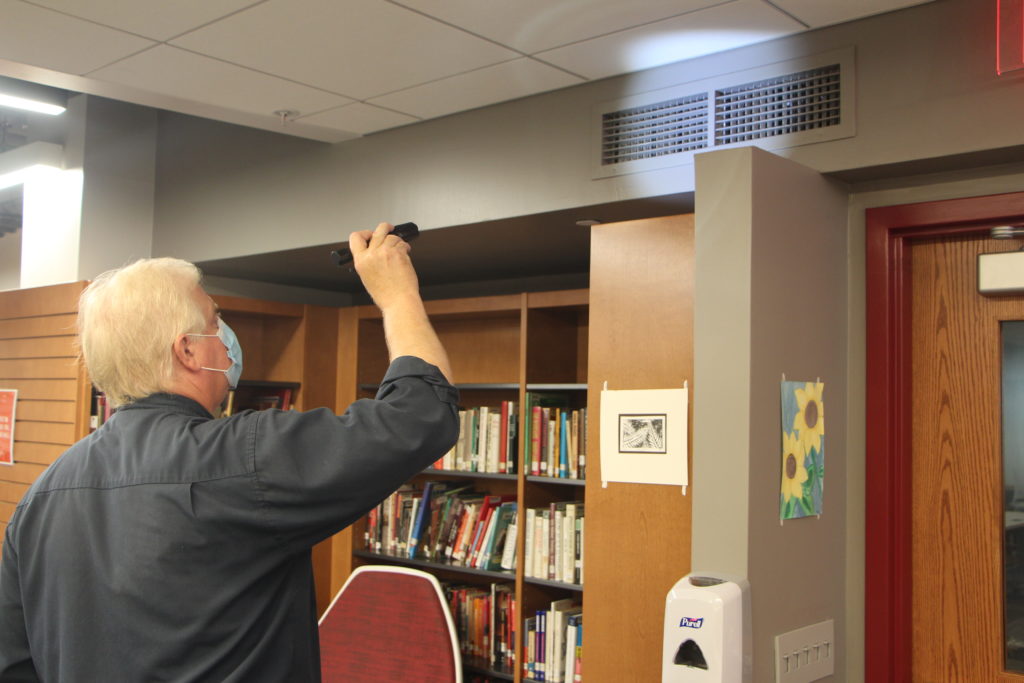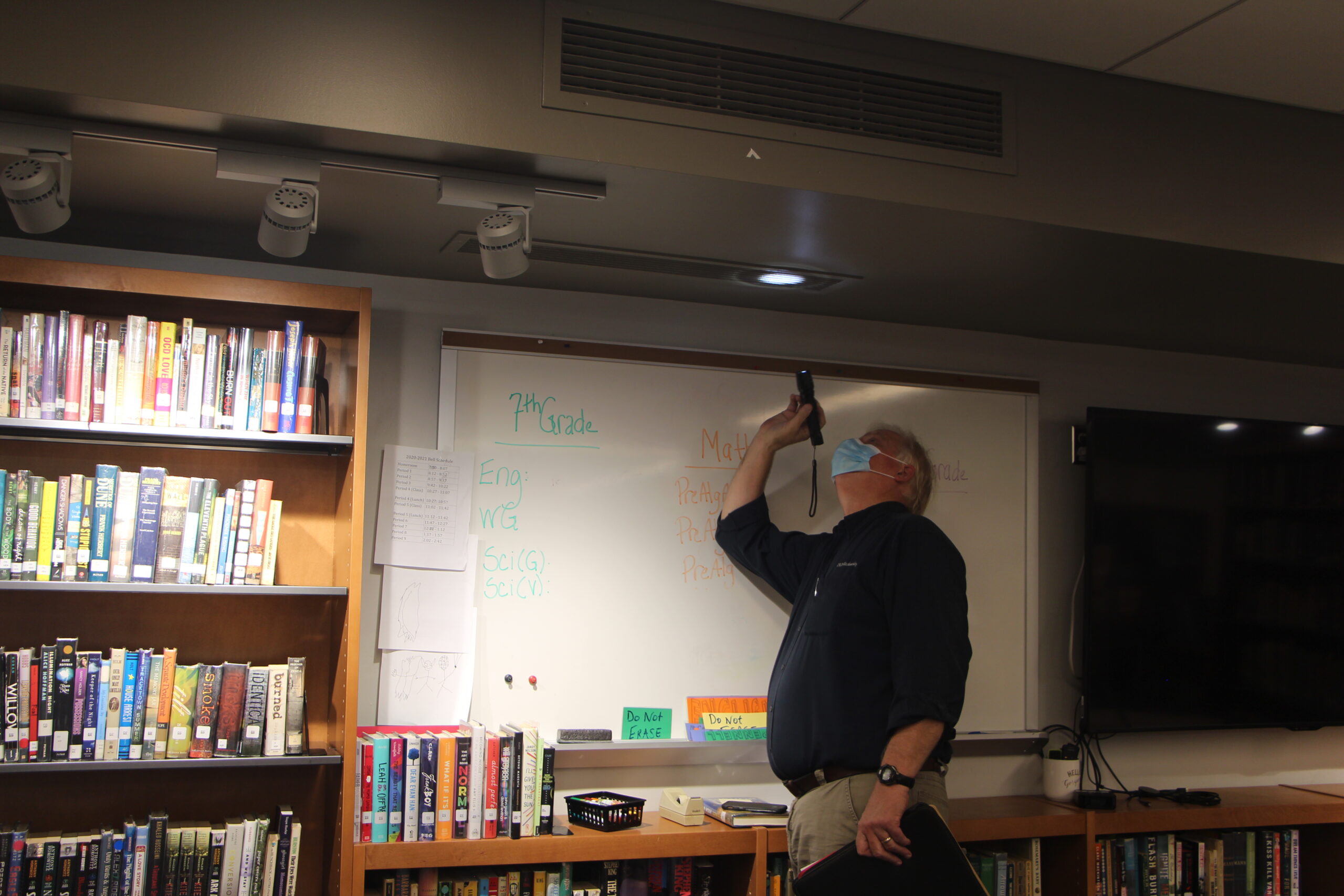There is no question that now more than ever the world has a heightened awareness of airborne toxins. The CDC states that it IS possible that COVID-19 can spread through droplets and airborne particles when a person who has COVID-19 coughs, sneezes, sings, talks, or breathes.
For the last 10 months, Schools buildings all over the world have not been running as they traditionally would due to this pandemic and mandated stay at home orders. Students, staff, and facilities personnel have all been operating on different schedules and now with schools reopening and schedules beginning to normalize, questions around air quality in these buildings are on the rise. How is the air quality in your child’s school?
Are you the Director of Facilities for your local School District or a parent of a child attending these facilities? Have questions around indoor air quality in your schools been asked?

INX Indoor Air Quality President and Owner, John Cavanaugh, inspecting the HVAC system within a local Chester County High School.
Besides the obvious health concerns for the Students, Teachers, and other school personnel, unsatisfactory indoor air quality caused by mold (especially amidst a global pandemic) could be a Public Relations Nightmare for the Entire School District.
Schools are already battling closures due to COVID-19, and cannot afford to close for additional days due to indoor air quality and/or mold related issues. Not to mention the unnecessary increase in doubts, fear, and anxiety that indoor air quality issues carry. Responding to this type of crisis costs the school district significant time and money. And even when the situation is rectified, some doubt still remains, “Is my child really safe to go back there?? What about the other schools in the district??… and the list of doubts and concerns doesn’t stop there.
Taking simple yet cost effective steps (like properly maintaining the Unit Ventilators) which help avoid these situations is crucial.
Are all Indoor Air Quality issues directly related to Unit Ventilator Cleaning? Of course not, however, maintaining clean Air Conditioning and Heating equipment is a very important maintenance fundamental to avoiding many Indoor Air Quality issues.
HVAC System Contamination and Condensate Issues commonly lead to Water Damage, Mold Growth and can cause other “Sick Building Syndrome” type complaints.
Sick Building Syndrome (SBS) is easily understood by this simple analogy – ” when you are in the building you feel sick, and when you leave the building, you feel better”. Two very common SBS issues stem from Fungal Contamination (Mold) and Improper Ventilation (High Carbon Dioxide Levels and Insufficient Fresh Air).
So to recap….
We know dirty Unit Ventilators in classrooms can have severely restricted air flow and cause Improper Ventilation resulting in High CO2 Levels. We also know that dirty Unit Ventilators clog coils and condensate drains, resulting in water overflow causing water damage and Mold Growth.
A unit ventilator takes about an hour or two to properly clean by an experienced IAQ technician. The cost is less than $200. The savings in energy alone should recoup the cleaning fee very quickly.
Clean equipment breaks down less, which saves in service repairs. Clean properly maintained equipment doesn’t leak, which minimizes the potential for Mold growth. Clean equipment ventilates the classroom properly, brings enough fresh air in to reduce carbon dioxide levels, allowing the Students and Teachers to be more alert with clearer minds to help the learning process. Clean equipment heats and cools the classroom quicker and quieter to increase comfort and cause less of a distraction. Cleaner, more efficient systems use less energy which is even better for our environment!



